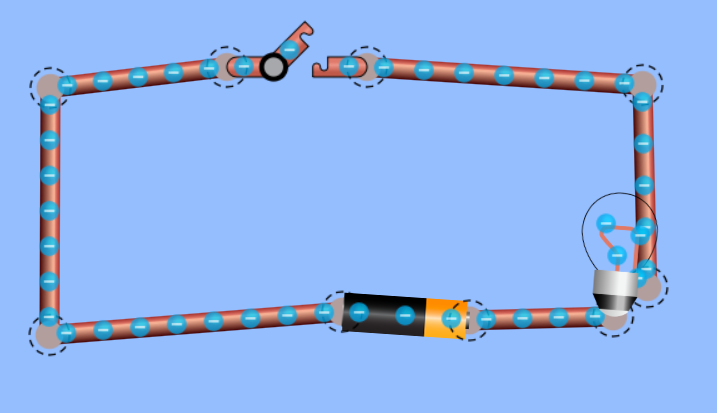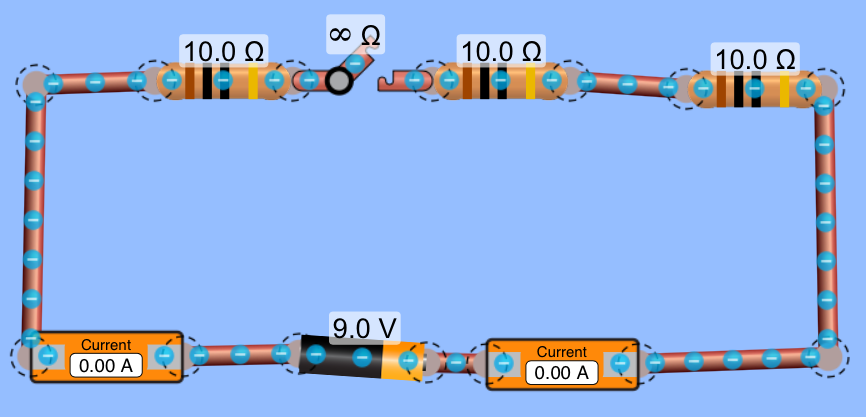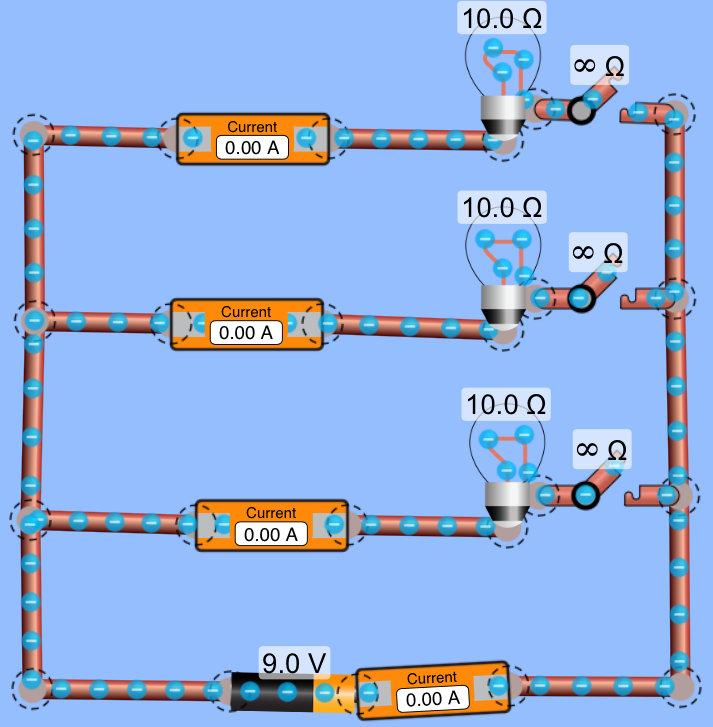==========
Circuit #1
==========

Observe what happens to the light bulb when you:
1. close the switch.
2. add a resistor in series and close the switch.
3. have two batteries in series, with the same polarity, and close the switch.
4. havetwo batteries in series, with the opposite polarity, and close the switch.
Close the switch. Predict the voltmeter reading before placing its two leads on either side of the:
1. battery
2. lightbulb
3. switch
==========
Circuit #2
==========

Before closing the switch, compute what the current should be in the lefthand ammeter and in the righthand ammeter.
Open the Battery Resistance slider and quantitatively predict what will happen to the current when you ramp up the wire resistance.
Open the Wire Resistivity slider and qualitatively predict what will happen to the current when you ramp up the wire resistance.
==========
Circuit #3
==========

Quantitatively predict the individual ammeter readings before closing all three switchs. Test your prediction. Traverse a loop and equate the sum of voltage drops to zero to verify one of the observed ammeter readings.
Close all three switches and use the voltmeter to measure the voltage drop across each light bulb. Also measure the voltage drop across each ammeter.
Observe the bulb brightnesses when all three switches are closed. Predict what will qualitatively happen to each bulb brightness when you open the middle switch.
Open all three switches. Quantitatively predict the ammeter readings when you close the top and bottom switches. Test your predictions.
Close all three switches. Quantitatively predict the bottom ammeter reading when you open the middle switch. Test your prediction.
==========
Circuit #4
==========
Construct a 4th circuit that involves battery in series with two light bulbs. Qualitatively predict what will happen to the bulb brightnesses after you add a 3rd bulb in:
1. series with the first two bulbs.
2. parallel with one of the first two bulbs.